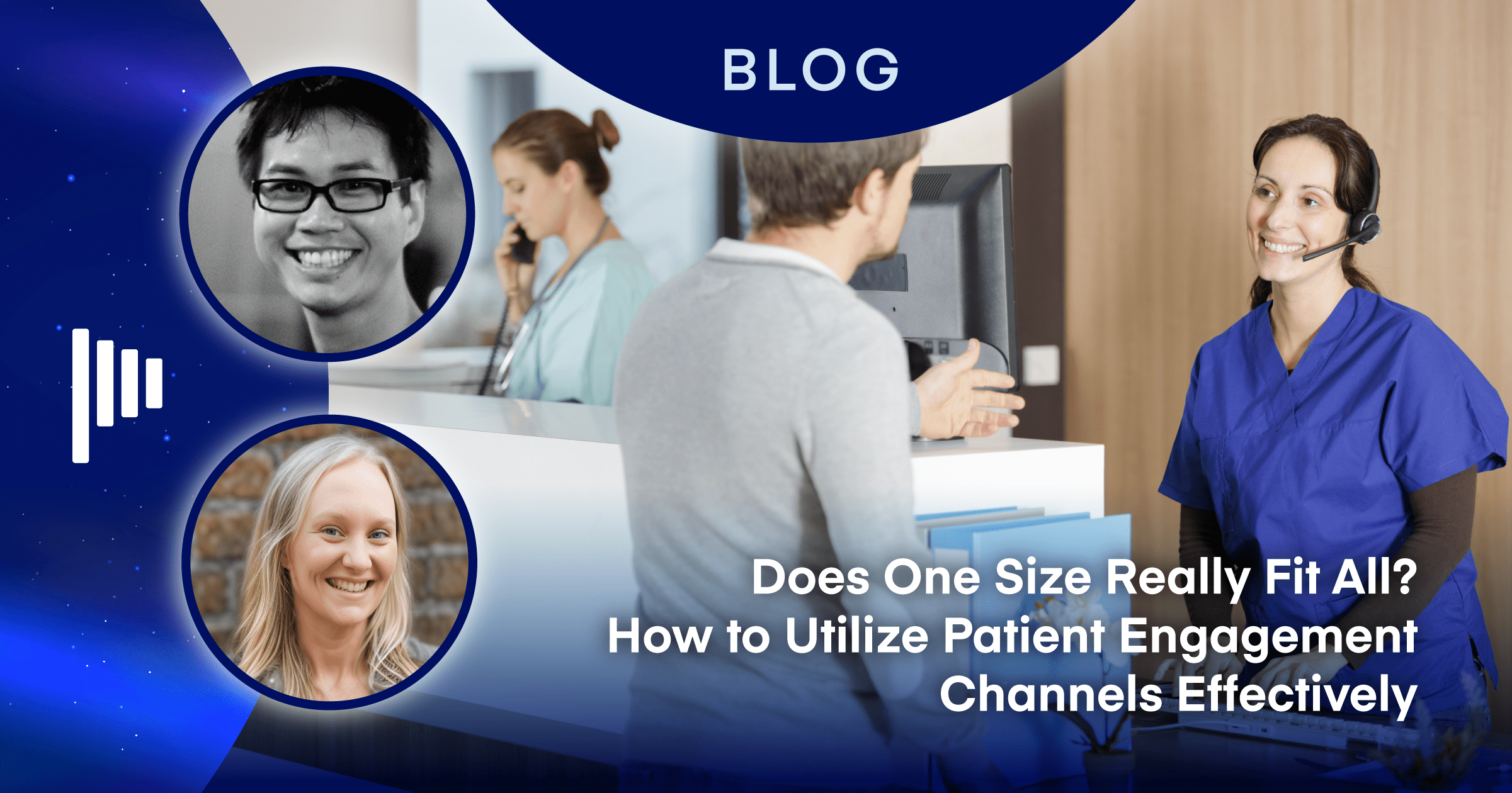Recently, Planet DDS Product Marketing Director Tony Ouk sat down with Technical Product Manager Stacie Coates, who leads product initiatives for our patient engagement suite of products. She recently did some industry research on the topic and shared some key findings.
Tony: Stacie, can you tell us a little about yourself?
Stacie: Absolutely! I’m Stacie Coates, a product manager at Planet DDS, specializing in consumer engagement. With nearly four years in this role, I’ve been empowered to bring a patient-centric mindset to planning and delivering new features for Denticon, Cloud 9, and Legwork. Prior to this, I spent seven years in the Health and Fitness sector, focusing on consumer access to online member management, including buying gym memberships, childcare and tennis reservations and more.
Tony: What exactly is patient engagement?
Stacie: Patient engagement has many different aspects to it, but if I were to explain it in a simple sentence, patient engagement is how a dental practice communicates with its patients and how patients communicate with them. Traditionally, we thought of this mainly as a phone conversation, like when the dental front office calls you to confirm an upcoming appointment. But today, we have so many other tools like email, text messages, online patient portals and more. This brings new opportunities to engage and communicate with patients.
Tony: But do patients really want to be contacted more by the dental practice?
Stacie: Absolutely! Recent research from Becker’s highlights the critical role of communication in the patient experience. According to a 2021 survey, 27.7 percent of adults switched dentists due to a poor communication experience. Therefore, it’s crucial for dental practices to find effective ways to engage with their patients. This goes beyond appointment reminders or scheduling calls; it could include informing patients about available treatment options they may not be aware of, or simply extending well-wishes on occasions like birthdays or the New Year. As Becker’s study reveals, patients value genuine interaction with their dentist.
Tony: OK, so it’s important to engage more with patients. But there are so many ways that a dental practice could do that. I traditionally would only get a phone call from my dentist to remind me to either schedule an appointment or confirm one. Do you have any thoughts about that?
Stacie: In my recent research, I found that among the three main methods of contacting patients—phone, email, or text—text messaging emerged as the most effective way to engage with them. Text messages boast a remarkable 98 percent open rate, far surpassing the 55 percent answer rate for phone calls and the meager 30 percent open rate for emails. Patients pay almost twice as much attention to text messages compared to other forms of communication. Interestingly, even for appointment confirmations, 50 percent of patients surveyed preferred receiving them via text message, as opposed to 29 percent for phone calls and 21 percent for emails.
Tony: So, it seems that through text messaging patients seem to see your message, but are they actually paying attention and engaging with you?
Stacie: That’s a good question. So, I dug in a bit deeper and saw that when asked for some call to action, text messages had a 53 percent response rate versus only 24 percent for phone. Trailing far behind these two was email. It only saw at best a six percent response rate.
Tony: So, are you saying that a dental practice should mainly text their patients?
Stacie: Tony, I wish it were that simple. Overusing one channel can overload the patient and lead them to start ignoring your messages. For calls to action, like confirming an appointment or reminding them to fill out a form, text messages are likely the most effective. However, for non-urgent messages, such as birthday wishes or information about treatment plans, email might be more appropriate. With email, patients can view the message at their convenience. Additionally, email allows for beautifully designed communications, resembling a greeting card. Some people still appreciate real interaction, so a phone call can also be effective from time to time.
Tony: Was there anything in your research that surprised you?
Stacie: There was. So, for appointment confirmations, as expected, text messages performed the best. An appointment confirmation through text only had a 1.9 percent no show rate. For email, it was 2.68 percent. But surprisingly, phone confirmation had the highest no-show rate at 3.49 percent. You would think that if you talked to someone and said you were going to come in, you’d feel more inclined to show up for the appointment, but that wasn’t always the case. My guess is that people’s lives are busy and there’s no physical record of that appointment reminder on the phone like for a text message or email, so people just sometimes forget.
Tony: All this has been really informative and interesting. Any final thoughts?
Stacie: I believe it’s crucial to recognize that patient engagement involves numerous touchpoints with the patient. It could be their initial interaction with you when they are seeking a new dentist or orthodontist. As the saying goes, you only have one chance to make a good first impression. On the other hand, it could also be the patient’s most recent interaction with you, emphasizing the importance of maintaining that connection. Therefore, dental practices should carefully consider their approach to patient engagement to ensure they provide the best experience and care. My final thought would be not to hesitate to make changes to the messages being sent, but also to track schedule utilization to validate the effectiveness of these changes.
To learn more about how Planet DDS can help you with Patient Engagement, please visit here.
